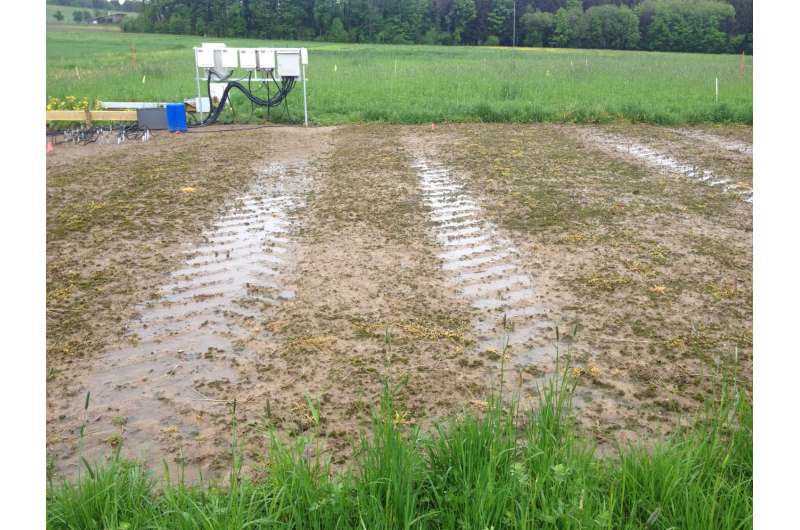Monitoring soil structure changes after compaction

Soil compaction is a global threat to soil ecosystem services, causing tremendous costs to society. The costs of soil compaction are borne by the cumulative loss of soil functionality (e.g. yield loss) following a compaction event until the soil has functionally recovered. Although soil compaction is relatively widely studied, there is a lack of reliable observations and metrics for soil structure recovery rates after compaction.
In the April issue of Vadose Zone Journal, researchers describe the objectives, the design, the implementation, and monitoring concept of a long-term field experiment for monitoring post-compaction evolution of soil structure, referred to as a soil structure observatory.
Initial compaction increased soil bulk density to about 0.5-m depth, decreased fluid transport capability, and increased mechanical impedance. Initial results from the post-compaction monitoring indicate projected recovery rates of years to decades, with different recovery rates for different properties and decreasing recovery rates with soil depth.
Besides enabling quantification of recovery rates of compacted soil and better understanding of the recovery mechanisms, the authors expect that data provided by the soil structure observatory will help improve our general understanding of soil structure dynamics and help define strategies and guidelines for accelerating soil structure recovery, and more generally, improving soil structure in modern agriculture.
More information: Thomas Keller et al, Long-Term Soil Structure Observatory for Monitoring Post-Compaction Evolution of Soil Structure, Vadose Zone Journal (2017). DOI: 10.2136/vzj2016.11.0118
Provided by American Society of Agronomy



















